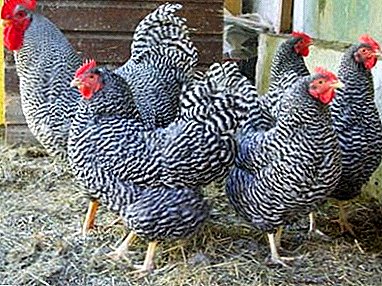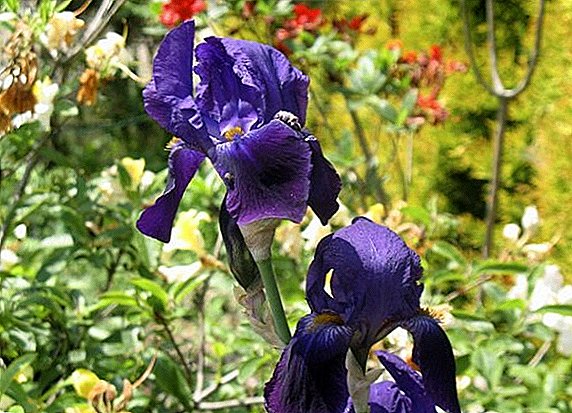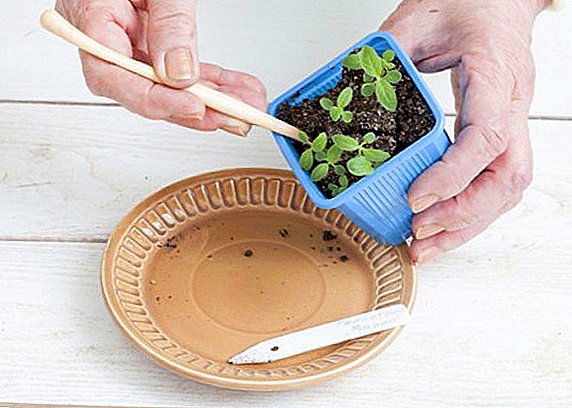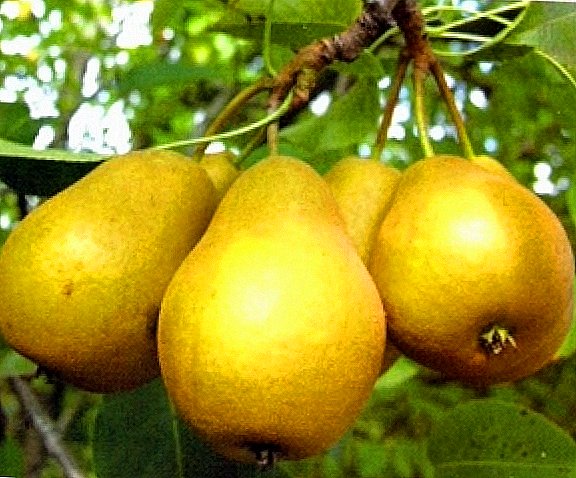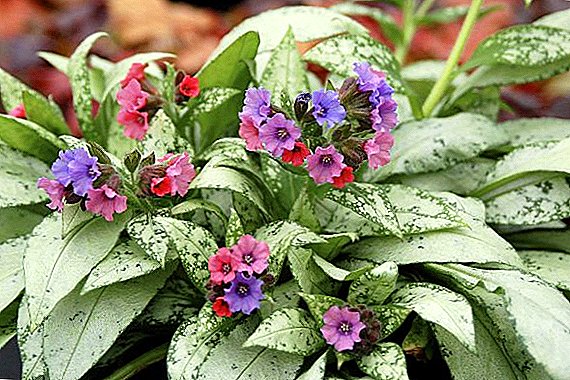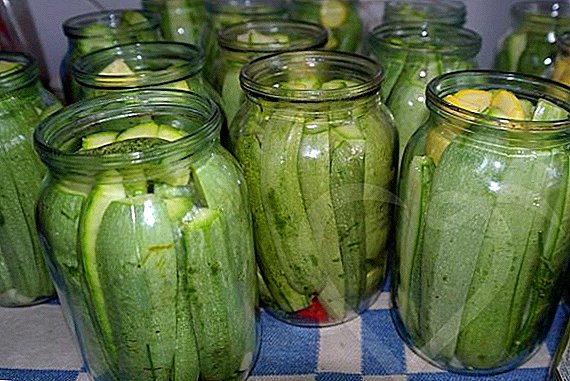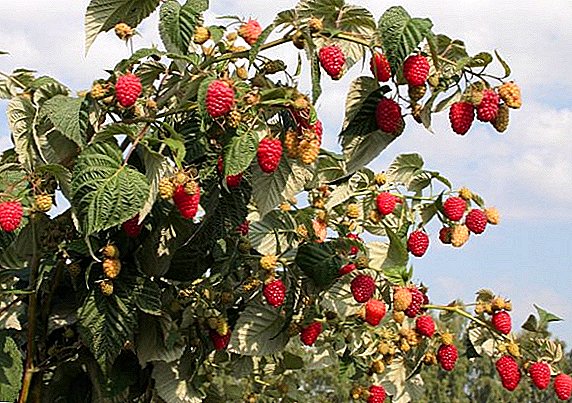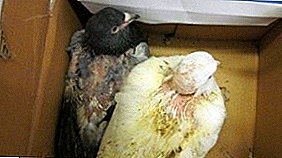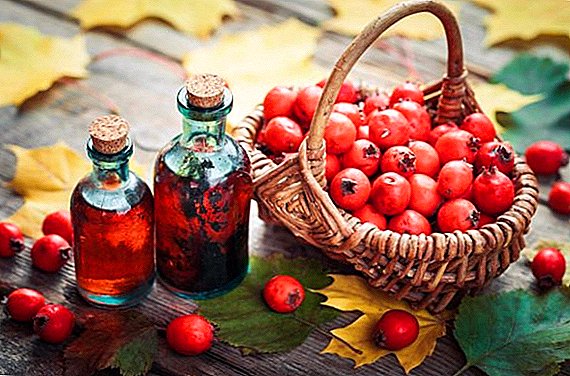 Every spring, people admire the tender buds of hawthorn, but many do not know about its healing properties. Meanwhile, phytotherapists practice the treatment with the fruits and flowers of a plant for neurosis, atherosclerosis, cardiovascular diseases and climacteric disorders.
Every spring, people admire the tender buds of hawthorn, but many do not know about its healing properties. Meanwhile, phytotherapists practice the treatment with the fruits and flowers of a plant for neurosis, atherosclerosis, cardiovascular diseases and climacteric disorders.
In this article we will reveal the characteristics of the flowers and fruits of hawthorn, tell you about their useful, healing properties and contraindications.
Chemical composition
In its raw and dried form, hawthorn contains many nutrients, but scientists have not fully understood the complex chain of interacting chemical constituents. It has already been proven that the value of a tree plant from the Rosaceae family is inherent in acids and flavonoids.  Based on the fact that herbalists recommend infusions, teas and other products based on flowers, fruits, and even seeds, we will analyze in detail the composition of all parts of the culture.
Based on the fact that herbalists recommend infusions, teas and other products based on flowers, fruits, and even seeds, we will analyze in detail the composition of all parts of the culture.
Did you know? Our ancestors knew about the benefits of hawthorn in the Stone Age, but it was only recently introduced into culture. Initially, the shrub was considered as an ornamental, and over time, people in France, the Mediterranean, Turkey, China and Algeria began to cultivate the plant in order to harvest medicinal raw materials.
In the leaves of hawthorn found:
- acanthol, ursol, neotolovaya, coffee, crahegolovoy, chlorogenic acid;
- quercetin;
- essential oils;
- vitexin and rhamnoside vitexin;
- hyperoside.
- Quercitrin and Quercetin (flavonoids);
- tannins;
- oleic, chlorogenic and caffeic acids;
- acetylcholine and choline;
- trimethylamine;
- carotenoids.
 In addition, they identified:
In addition, they identified:- pectins;
- hyperin;
- cratex, ascorbic, citric, stearic and palmitic organic acids;
- triterpene substances;
- sucrose;
- vitamins K, E, C;
- choline and acetylcholine.
The seeds of the fruit are enriched with amygdalin and hyperoside, and the bark of the tree or shrub - with crategin.
Also in all parts of the plant are micro-and macro. Of these, the most represented are boron, magnesium, potassium, molybdenum, selenium, manganese and ash. At the same time, the hawthorn calorie content is very low - 100 g of dried potion is only 50 kcal.
Did you know? The ancient Greeks believed in the magical power of hawthorn and hung its thorny branches on the front door to scare away evil spirits and diseases.
Beneficial features
Regular consumption of raw hawthorn in the form of tinctures, tea, decoctions and juice has a healing effect on the entire human body. Wherein agents are completely non-toxic. The main thing - to know the measure and comply with the recommended dosage. Fruits and shrub flowers are widely used for treatment. Consider their pharmacological features. 
Fruits
Herbalists note the ability of berries to strengthen the heart muscle, prevent its excessive load, expand the heart arteries and prevent malfunction of the heart. Also, agents based on the fruits of blood-red hawthorn have the properties of enrichment of myocardium and blood vessels of the brain with oxygen. How to make hawthorn correctly for the heart, consider below.
Juice and tinctures from raw materials contribute to the normalization of the urogenital, nervous, circulatory and vascular systems. For insomnia, nervous disorders, high blood pressure, physical and emotional exhaustion of the body, hawthorn is prescribed.
Important! It is not recommended to take hawthorn-based drugs in large doses, since a dose of more than one hundred drops slows down the heartbeat and slows down the central nervous system.
Flowers
Many herbalists believe that the flowers of the plant more efficiently than berries. Restorative petal teas are recommended for the elderly, menopausal women, nursing mothers, people with weakened immune systems, in the postoperative period and suffering from disorders of the digestive tract.
Peculiarity of raw materials - in the absence of side effects, which allows it to be used regularly by patients with impaired renal function. Moreover, decoctions from the petals of culture are very popular in cosmetology for the care of the skin of the face and body. Flowers of the plant is prescribed in the treatment of angina, dizziness, atherosclerosis, coronary heart disease, cardiovascular failure, shortness of breath. 
Pharmaceutical preparations based on hawthorn
The healing effects of hawthorn are recognized not only by traditional medicine men, but also by official medicine. In pharmacology, a number of herbal remedies are found based on extracts from fruits and flowers of prickly, ordinary, blood-red and other small-fruited types of shrubs that have a healing effect. Among them you can find pills, extracts, tinctures, powders and plant materials.
Important! Frozen berries lose their astringency by reducing the amount of tannins, which always occurs in the process of freezing.
The following drugs are popular:
- "Cardiovalen" - oral drops, consisting of tincture of valerian, adonizid, hawthorn extract. Have a calming effect.
- "Valemidin" - drops on alcohol, helping with cramps of the heart muscles.
- "Fiterelax" - lozenges, which include hawthorn extract and valerian root. Recommended for sleep disorders and stress.
- "Kedrovit" - a tonic elixir made from flowers and berries of hawthorn, birch buds, cedar nuts, black chokeberry fruits and honey, helps the body recover from great physical exertion and overwork.
- "Amrita" - an elixir from alcohol-vegetable extracts from ginger, cardamom, dog rose, juniper, berries of thistle, thyme and licorice. It is used to strengthen the body.
- "Demidov syrup" - consists of fine fruit, calamus, birch buds, oak bark and oregano. Contributes to the normalization of the gastrointestinal tract.

Did you know? Celtic peoples considered hawthorn bushes to be the forerunners of darkness and evil. They also associated with this plant the appearance of all boils, edemas and tumors.
Preparation of medical raw materials
For the preparation of a therapeutic drug, herbalists stock up with inflorescences, petals, and berries of the plant.
Collection peduncle begin at the beginning of budding. At the same time cut off entirely floral brushes and individual flowers. They have a sharp unpleasant odor and bitter taste. Herbalists strongly recommend collecting only the opened samples and be wary of the buds, since they dry out for a very long time and darken with time, which worsens their chemical composition.
Berries from the shrub to break off in the last decade of September, when they come full maturation. The main thing is to catch up to the first frosts, which destroy vitamin C. Procurement work should be planned in dry warm weather. It is important that before this there is no rain or dew.  After harvesting, the harvested raw material must be dried in a dry and well-ventilated area, away from dusty roads and direct sunlight. The ideal place for this is the attic. At night it should be closed, because the hawthorn fruit is highly absorb moisture. Some hostesses dry the potion in electric dryers. In such cases, it is recommended to set the timer to 40 ° and maintain the raw materials in the device for no more than 2 hours.
After harvesting, the harvested raw material must be dried in a dry and well-ventilated area, away from dusty roads and direct sunlight. The ideal place for this is the attic. At night it should be closed, because the hawthorn fruit is highly absorb moisture. Some hostesses dry the potion in electric dryers. In such cases, it is recommended to set the timer to 40 ° and maintain the raw materials in the device for no more than 2 hours.
Important! Harvested raw materials from hawthorn flowers are stored in glass containers with tight lids for no more than 1 year, and berries are stored in plywood boxes for 2 years.
Recipes for therapeutic purposes.
For medicinal purposes, raw materials are used in both raw and dried form. From the flowers, berries and bark of the plant, you can prepare a healing drink, alcoholic tinctures and even honey. Next, we will reveal the main secrets of hawthorn and figure out how to brew and how to drink it.
Did you know? From hawthorn bark, purple fabric paint is prepared, and from foliage - yellow and brown.
Tea
To prepare this medicinal drink in a thermos you need to fill in for the night with 1 l of boiling water about 30 fruits. You can improve the taste and effect of the medicine by adding a few wild rose berries. Not recommended cut the fruit, because in their whole form they have more nutrients.
From the petals drink is prepared, pouring 1 tablespoon of raw material 300 ml of boiling water. After the infusion has been set up for 20 minutes, it is filtered and drunk three times a day in small portions. Folk healers note that hawthorn tea normalizes blood pressure, calms the nervous system, but, besides its benefits, it can also cause harm. Often this occurs when the imbalances and dosage of the funds. 
The juice
In October, when ripe berries can be squeeze juice. It has a beneficial effect in impaired blood circulation and digestive disorders. Moreover, the drink can be prepared from both leaves and flower petals. In this case, you need to collect raw materials in early May, when the plant is at the peak of the growing season. Consider that after boiling and dilution with water, the drink to some extent loses its healing properties.
Drinking hawthorn juice is recommended three times a day, 15-20 drops half an hour before meals.
The cardiovascular system will improve if you eat apricots, red currants, green apples, pears, guavas, mulberries, melons, edible honeysuckle, carrots, tomatoes, physalis, squash, champignons.
Honey
Hawthorn is a wonderful honey plant. Honey from it is recommended for diseases of the cardiovascular system, colds, menopause in women, atherosclerosis, diarrhea and stomach ulcers. In order for the delicacy to benefit and not cause harm, its allergy testing. To this end, you need to apply a small amount of product on the lips and hold for half an hour. Appeared itching and redness indicate contraindications.
Some healers enhance the effect of hawthorn honey with royal jelly, which is consumed simultaneously. In this case, the main thing is not to overwhelm the body with useful micro and macro elements, since this is fraught with serious complications.
Important! Hypotonics (people with low blood pressure) treatment of hawthorn is contraindicated, because the plant provokes deterioration.
Decoction
Broth from foliage and hawthorn berries recommended to enhance the contraction of the heart muscle, but, besides its benefits, has a number of contraindications. Let us dwell on the methods of preparation of the healing liquid.  For angina, folk healers advise making inflorescences, leaves, and fruits (about 1 tablespoon of each ingredient will be needed for 1 liter of boiling water). After the potion is infused for 3 hours, the broth must be drained and can be taken orally. It is important to drink half an hour before meals 3 times a day.
For angina, folk healers advise making inflorescences, leaves, and fruits (about 1 tablespoon of each ingredient will be needed for 1 liter of boiling water). After the potion is infused for 3 hours, the broth must be drained and can be taken orally. It is important to drink half an hour before meals 3 times a day.
Some make decoctions exclusively from the fruit of the fruit (a glass of boiling water will need a tablespoon of berries). For this, they are poured into boiling water, covered with a lid and kept on the fire for about 10 minutes. Drink this potion should be 3 times a day for no more than 3 weeks.
Learn more about the healing properties of red rose hips and barberry.
Infusion of fruits
Elemental infusion of berries at home is prepared by brewing a handful of whole raw material with a liter of boiling water. The liquid is left to infuse overnight. And in the morning begin to take an hour before breakfast. 3 receptions are recommended per day. Drinking is very effective for arrhythmias, heart disease and blood arteries. And if the fruits are chopped, then the infusion will be prepared much faster.
Infusion of flowers
A tablespoon of crushed or whole inflorescences pour a glass of boiling water. Top cover, wrap and leave for half an hour. Then the liquid is passed through a sieve and take half a glass every day before eating 3 times a day.
Alcohol tincture
The medicine is made from dried berries or petals. This will require approximately 30 g of raw materials and 100 ml of vodka or alcohol (40%). All the ingredients are combined in a glass container, tightly closed and sent to a dark place to insist. After 14 days, the fluid will be ready. It is recommended to drink it in small doses, 25-30 drops before meals. The tool must be diluted with water. Hawthorn tincture has a beneficial effect on blood vessels, cleans them of cholesterol, strengthens the heart muscles.
For the treatment of diseases of the cardiovascular system, the medicinal properties of peony, lavender, aconite, aloe, calendula, amaranth, silver sucker, hellebore, chervil, nettle are used.
Contraindications and harm
Despite the enormous benefits for the human body, the use of hawthorn raw materials in medicine and cooking is not shown to everyone. If we ignore the recommendations and advice of specialists and attending physicians, such therapy can bring more harmrather than good.
Firstly, in case of violations of the methods of use and dosages, nausea, dizziness, vomiting, as well as depression of the pulse are possible, which is fraught with serious consequences for people with heart disease. Secondly, such actions can provoke poisoning and intoxication of the body.
Did you know? Hawthorn grows very slowly, but it can live for 2 or even 3 hundreds of years.
Before starting treatment, it is important to test yourself for the presence of an allergic reaction to the components of the healing potion. To abstain from it should be allergic, pregnant, women during lactation and hypotensive.  Special care is required to observe people suffering from heart disease. In such cases, experimenting with self-treatment is not at all appropriate. First you need to consult a cardiologist.
Special care is required to observe people suffering from heart disease. In such cases, experimenting with self-treatment is not at all appropriate. First you need to consult a cardiologist.
Categorically you can not take decoctions, tinctures and teas from hawthorn on an empty stomach - this will provoke an intestinal spasm, which will cause vomiting. Also during therapy it is not recommended to drink potion with cold water. This can cause colic in the intestines and flatulence.
We have revealed the main secrets of treatment with decoction, teas, juices, hawthorn tinctures, from which these tools help and how to take them. The main thing is to comply with the measure in everything and not to overdo it with the amount of drugs. Be healthy and do not self-medicate, because you can harm yourself with good intentions.



